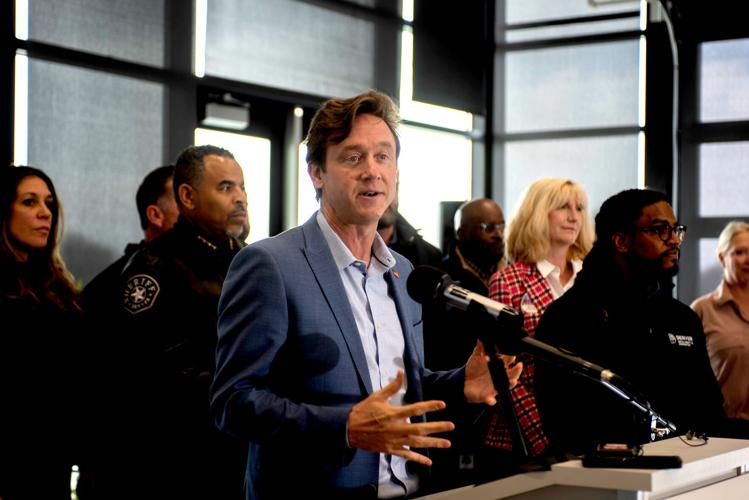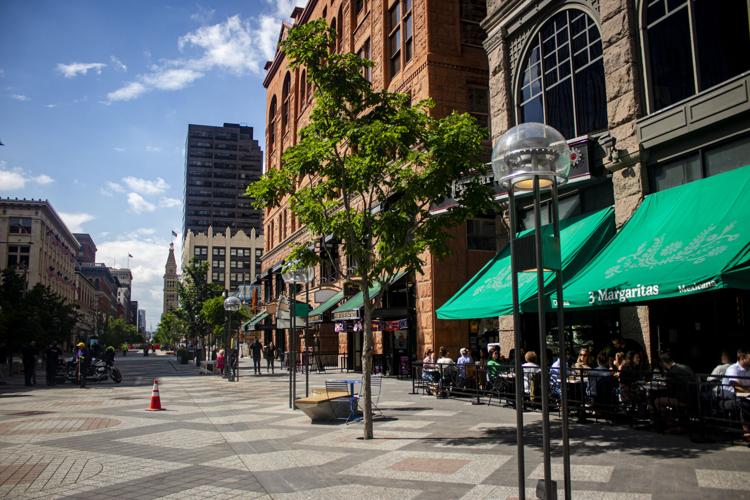City council sends $1 billion ‘Vibrant Denver’ bond package to voters
Denver voters will decide in the Nov. 4 election whether to approve Mayor Mike Johnston’s six-year, roughly $1 billion “Vibrant Denver” borrowing proposal to fund infrastructure and road improvements, libraries, parks, and recreational amenities in the city.
The Denver City Council voted unanimously to refer the plan to the ballot, which will ask voters for authorization to issue general obligation bonds of up to $950 million.
The council also asked voters to consider five additional bills, individually, that cover each of the five categories of projects.
“This is not a perfect bond, but it is what we have with $950 million, the biggest, I think, in Denver’s history,” Denver City Council President Amanda Sandoval said.
Despite earlier differences on what projects to fund, most councilmembers acknowledged the need for the additional funding.
“For me, this was really about mission-critical projects in ensuring every district had something residents had been asking for, fighting for, for many years, and wanting to see done and completed in their district,” District 3 Councilmember Jamie Torres said of the borrowing. “That was really important.”
Although municipal debt can be “complicated,” At-large Councilmember Sarah Parady said it is a necessary to address needs.
“We are under-resourced in Denver, and we are stretching all the time to cover the things that we need, and that’s just a reality,” Parady said. “And it’s about to get far worse if we start seeing the kind of funding cuts that are being threatened from the federal level. And a lot of that money is transit money, quite frankly. So, this would not exactly be the time for us to give up on the way that we can pay for the physical things that we need in the city.”
City officials framed the bond, which Johnston has branded the “Vibrant Denver” plan, as a “much-needed” investment in the city’s future, aimed at repairing and improving infrastructure and community spaces, including roads, bridges, parks, playgrounds, recreation centers and libraries without — they emphasized — raising taxes.
“I just want to acknowledge once again, that there were some meaningful projects that did not make it into this bond package,” Sandoval said, “And with that, that does not mean the door is closed; some may be better suited for funding through other types of funding mechanisms.”
Citing economic uncertainty, the city’s Department of Finance has recommended that the bond not exceed $950 million.
Depending on the terms, such as the number of years to pay for the borrowed dollars, and how the debt structured, Johnston’s bond could eventually cost the city’s taxpayers twice the proposed amount.
However, city officials said they have no intention of extending the bond beyond six years.
City officials also said they are being cautious to maintain Denver’s AAA bond rating, which keeps the cost of borrowing money low.
The maximum total cost for this bond is $1.897 billion, Laura Swartz, communications director for Denver’s Department of Finance, told The Denver Gazette on July 29.
“This total comes from the ballot questions that people will vote on in November, and the city cannot exceed it,” she said, noting “a more likely scenario based on our debt structure and low cost of borrowing is about $1.4 billion.”
Some councilmembers questioned that amount of borrowing and spending.
“I fear we’re skipping on critical conversations about long term fiscal health and placing burden, the burden of Denver’s growth, on taxpayers instead of developers, who benefit most,” District 7 Councilmember Flor Alvidrez said. “From the beginning, council was told that this bond would be kept at $800 million. That figure shaped what projects were submitted in district seven. That meant leaving out long standing, high-need priorities like Alameda underpass, which is over 100 years old and has been on the books for generations.”
Should voters approve the measure this fall, nearly half of the bond funding (46%) would be allocated to transportation and mobility projects, including streets, bridges, and improvements to enhance traffic and pedestrian safety.
About 25% of the funds would be allocated to improvements at city facilities, including libraries, community centers, and the animal shelter. Additionally, capital maintenance support would be provided for popular places, such as Red Rocks, the Botanic Gardens, the Denver Zoo Conservation Alliance, and the Denver Art Museum.
Improving and expanding parks and recreation infrastructure accounts for approximately 19% of the bond, while 7% would be used for ADA improvements to housing and shelter facilities, as well as adding new affordable housing.
Another 3% would be used to expand a family health clinic and build a children’s center.







